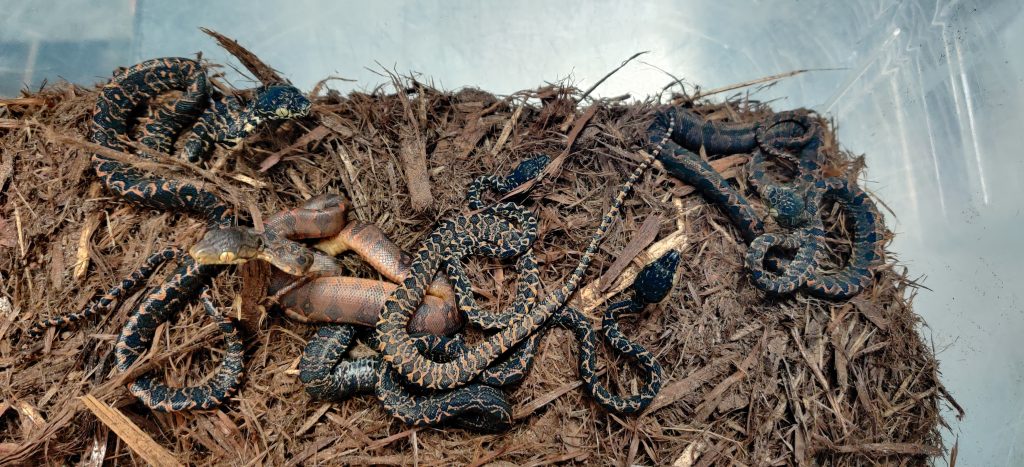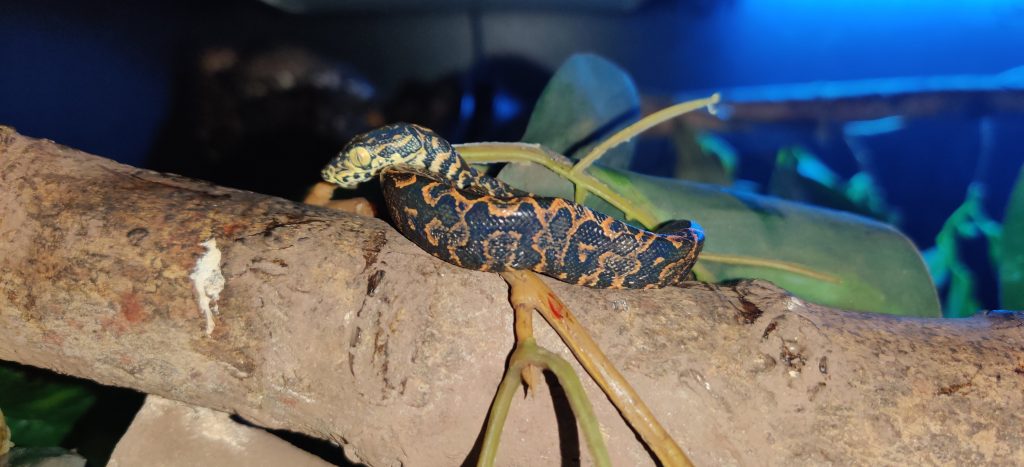A small litter of Corallus cookii, born September 26 at approximately 10:00 p.m., consisted of six live neonates, three small unfertilized ovum and no stillborn. The neonates weighed 5.51 g to 14.09 g with an average weight of 11.86 g. The female moved away from the heat source immediately after shedding on 16 September. She also dropped a large quantity of pre-birth material in the bowel movement.

There is a variety of pattern and color between the neonates, though this polymorphism is not as pronounced as it is with C. hortunalus or C. grenadensis.

The female boa, once finished with parturition, consumed all three unfertilized ovum-possibly the first time this behavior has been documented in the species.
A total of three litters was produced in 2021:
- US: 6 live and 3 unfertilized ovum on 26 September. Smallest neonate weighed 5.51 g and the largest weighed 14 g with an average weight of 11.86 g.
- US: 5 live, 1 stillborn and 6 unfertilized ovum on 8 October. Smallest neonate weighed 7.96 g and the largest weighed 9.89 g with an average weight of 8.65 g.
- US: 5 live, 1 stillborn and 2 unfertilized ovum on 8 October. Smallest neonate weighed 7.4 g and the largest weighed 12.0 g with an average of 10.18 g.
For more photos and a complete overview of the species, view the C. cookii chapter.
